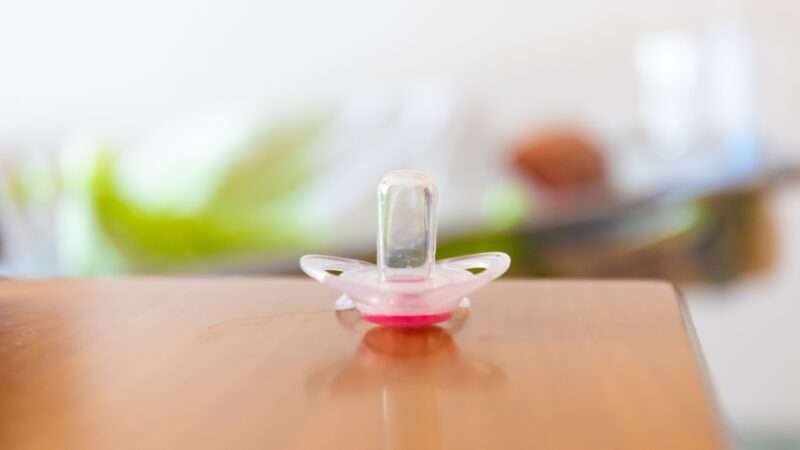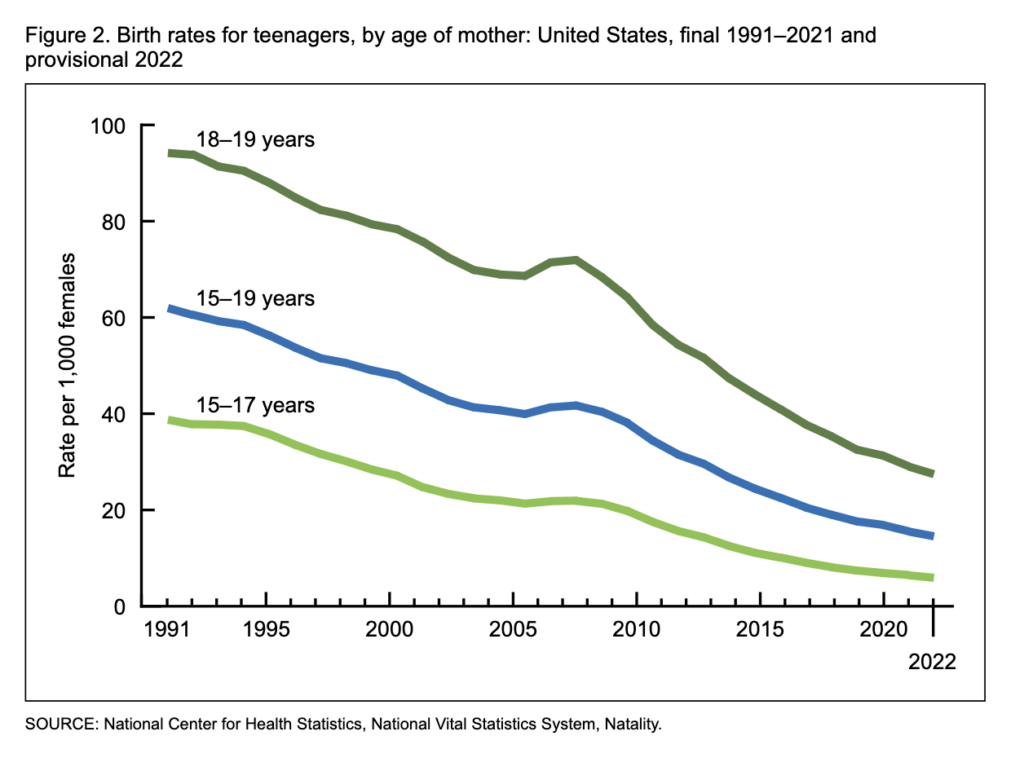
After years of consecutive declines, U.S. birthrates ticked up slightly in 2021. But that pandemic baby boomlet didn’t extend into 2022, according to new data from the Centers for Disease Control and Prevention (CDC).
The new CDC data are based on 99.91 percent of all 2022 birth records received and processed by the National Center for Health Statistics as of mid-February 2023. They show that what some had hoped might be the start of an extended baby boom was not to be.
The number of U.S. births decreased once again in 2022—albeit less than 1 percent from the previous year. There were 3,072 fewer births in 2022 than in 2021, and 47,573 more births last year than there were in 2020.
Last year saw a total of 3,661,220 U.S. births, for a general fertility rate of 56.1 births per 1,000 women ages 15 through 44.
In 2021, there were 3,664,292 U.S. births. Following declines of about 2 percent per year from 2014 through 2020, 2021 saw a 1 percent rise in births over 2020.
There was lots of speculation—and no clear answer—as to why more women were having babies in 2021. Some believe that the rise of remote work played a role. Some suggested it was because people were flush with cash from government stimulus payments and extra unemployment benefits. Still others argued that it was just a matter of slightly shifted birth timing—people who delayed trying to get pregnant during the start of the COVID-19 pandemic having babies a few months later than they otherwise would have. The fact that the birth boomlet didn’t continue throughout 2022 could support any of these theories, though it’s weakest for the remote work theory since many remote working situations continued into 2022.
In any event, the fall represents an ongoing trend in U.S. fertility, which has been sliding mostly steadily since 2007. The U.S. is far from alone in this trend. Replacement-level fertility is considered to be a fertility rate of 2.1, and many countries around the world—including the U.S.—fall far short of that.
The 2022 fertility rate was 1.665 (ever-so-slightly higher than the 2021 fertility rate of 1.664). This number represents an estimate of “the number of births that a hypothetical group of 1,000 women would have over their lifetimes, based on the age-specific
birth rate in a given year,” according to the CDC.
Falling fertility rates have spawned a lot of concern, and that’s not totally unwarranted. But there’s also a bright spot in this phenomenon: a massive decline in teen pregnancies.
The 2022 data are no exception, with the number of teen pregnancies reaching another record low.

The number of births to 15-to-19-year-olds was down 3 percent last year, to 13.5 births per 1,000 girls and women in that cohort. “Rates declined for both younger (aged 15–17) and older (aged 18–19) teenagers,” the CDC reported. Since 2007, the birthrate for these age groups has declined by 67 percent and, since 1991, by 78 percent. (For 10-to-14-year-olds, the 2022 birthrate was 0.2 births per 1,000 women, which is unchanged
since 2015.)
Birthrates were also down for women in their early 20s. Last year saw 60.4 births per 1,000 women ages 20 through 24—a birthrate decline of 2 percent from 2021 and 43 percent since 2007.
Things remained relatively unchanged for women in their late 20s and women in their early 30s. The 2022 birthrate for women ages 25 through 29 was 93.4 births per 1,000 women, which represents a very slight (less than 1 percent) increase in the birthrate for this cohort and a slight decrease (down 1 percent) in the total number of births for this cohort. There were 97 births per 1,000 women ages 30 through 34, a 1 percent decrease from 2021’s birthrate and essentially no change in the total number of births.
Birthrates rose for women in their late 30s and women in their 40s, continuing recent trends. There were 54.9 births per 1,000 women ages 35 through 39 and 12.5 births per 1,000 women ages 40 through 44, a birthrate increase of 2 percent and 4 percent, respectively. There were 1.1 births per 1,000 women ages 45 through 49, which represents a 12 percent rise in the number of births to this cohort from 2021–2022.
None of these changes are surprising. Young people this century have been starting families later in life than earlier generations did and having fewer children overall, too. And though we’ve been seeing big increases in the number of children born to women in their 30s and 40s, these haven’t been big enough to totally offset falling birthrates among U.S. teens and 20-somethings.
Interestingly, recent declines in the U.S. total fertility rates aren’t driven primarily by people choosing childlessness but by people with kids having smaller families.
There are all sorts of explanations for why this might be—though many fall apart when you look at actual data—and no clear answer. But one thing that’s been abundantly clear is that government attempts to boost fertility rates are doomed to fail—as I noted in Reason‘s June cover story (“Storks Don’t Take Orders From the State“).
The post The 2021 Baby Boom Didn't Last appeared first on Reason.com.
from Latest https://ift.tt/Gw1kcyH
via IFTTT